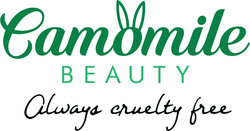Sunscreen - Mineral vs Chemical
Posted by Admin account on
Written by Christina Storto on 2018/06/24

During summer, the only question I ask myself that is more important than "Did I drink enough water?" is "Did I put on sunscreen?"
While we know sunscreen helps protect against suns rays and damage to your skin and health, you may be protecting your skin way less than you think by unknowingly choosing the wrong formula. The Environmental Working Group (EWG) recently found that 73 percent of sunscreen products didn't work very well, or contained concerning ingredients, including chemicals tied to hormone disruption and skin irritation.
What we can take away from that shocking statistic is that hormone-disrupting sunscreen filters are still in widespread use, many manufacturers are selling formulas that don't actually meet the SPF claims on their labels whether it be active ingredient amounts that are too low and/or ingredients that break down and become inactive in the sunlight.
The EWG researchers point out that even though most people focus on a high SPF, what they should really be looking at is the ingredients in the bottle. The brands least likely to have potentially harmful or irritating compounds typically fall into a category called mineral-based, or "natural," sunscreens. You can find more information on their website here.
Mineral Formula vs Chemical Formula

The main difference between traditional, chemical-based sunscreens and the mineral variety comes down to the type of active ingredients. Mineral-based creams use physical blockers—zinc oxide and/or titanium dioxide—sit on top of the skin forming an actual barrier and reflect the UV rays like a mirror to protect exposed skin against the sun’s rays. Sunscreens with zinc start protecting you as soon as you put them on, are stable and have no evidence of them causing any hormone-disrupting effects.
The others use chemical blockers—typically a combination of oxybenzone, avobenzone, octisalate, octocrylene, homosalate and/or octinoxate—which absorb UV radiation to dissipate it.
There are also two types of UV radiation: UVB, which is responsible for actual sunburns, and UVA rays, which penetrate deeper. Mineral-based, physical blockers protect against both. But since chemical blockers absorb the rays instead, this allows UVA to reach those deeper layers of your skin and do the damage.
The Problem with Chemical Blockers

Apart from the damage to your health and skin, some lawmakers have even gone as far as passing a bill that bans the sale and distribution of sunscreens containing those ingredients. In Hawaii the ban in in full affect as these chemicals are thought to be harmful to the ocean's coral reefs. Oxybenzone and Octinoxate can potentially increase coral's susceptibility to bleaching and up to 14,000 tons of sunscreen are reported ending up in the coral reefs every year. To understand more about what the coral reefs does for the ocean and its creatures and why it is important to keep them clean click here.
Nano vs Non-Nano
Many natural sunscreens with high concentrations of zinc and titanium dioxide are very white and not cosmetically pleasing because they have been left at their natural size and have not been made smaller (i.e. non-nano). Some manufacturers have counteracted this by developing formulas with nano-particles, particles so small they help the white titanium dioxide look more transparent and less thick so you can apply it easier and without that white cast.
Non Nano Sunscreen Micronized Nano sunscreen

Furthermore, there is good evidence that little if any zinc or titanium particles penetrate the skin to reach living tissues which makes these ingredients a safer and more efficient ingredient in your sunscreen.
What to Look For
First, look at the active ingredients to determine whether it's a chemical or mineral sunscreen. Don't make assumptions on the packaging alone.
The most common chemical and physical filters below:
Chemical Filters
- 4-Aminobenzoic acid (PABA)
- Avobenzone
- Cinoxate
- Diethanolamine methoxycinnamate
- Dioxybenzone
- Drometrizole trisiloxane (Mexoryl XL)
- Ecamsule (Mexoryl SX)
- Ensulizole
- Enzacamene
- Homosalate
- Meradimate
- Octinoxate (non-encapsulated)
- Octisalate
- Octocrylene
- Oxybenzone
- Padimate O
- Sulisobenzone
- Triethanolamine salicylate
Physical Filters
- Zinc oxide
- Titanium dioxide
- Octinoxate (if encapsulated)
Chemical filters work by penetrating into your bloodstream. They may prevent sunburns, yes, but have limited effectiveness against photo aging, the type of UV rays (UVA) that is responsible for sun spots and hyperpigmentation. Look for sunscreens with active ingredients zinc oxide and titanium dioxide because rather than absorbing into the body, these ingredients will remain on the surface of the skin.
Here is a chart to help you determine the amount of SPF pertaining to Zinc Oxide
| Less Than 15% Zinc Oxide | 15-20% Zinc Oxide | More Than 20% Zinc Oxide |
|---|---|---|
|
SPF 24 or less |
SPF 24 to 32 |
At least SPF 32 |
Many people with acne or blemishes are hesitant to use sunscreen for fear of aggravating their conditions. To avoid this issue, look for the word “non-comedogenic” on your mineral sunscreen which means that it won't clog your pores or Oil-Free.
Any sunscreen that contains the physical blocker zinc oxide or titanium dioxide will have you covered in both the health and skin department!
Share this post
- 0 comment
- Tags: mineral sunscreen, natural sunscreen, Sunscreen - natural vs chemical, zinc sunscreen







